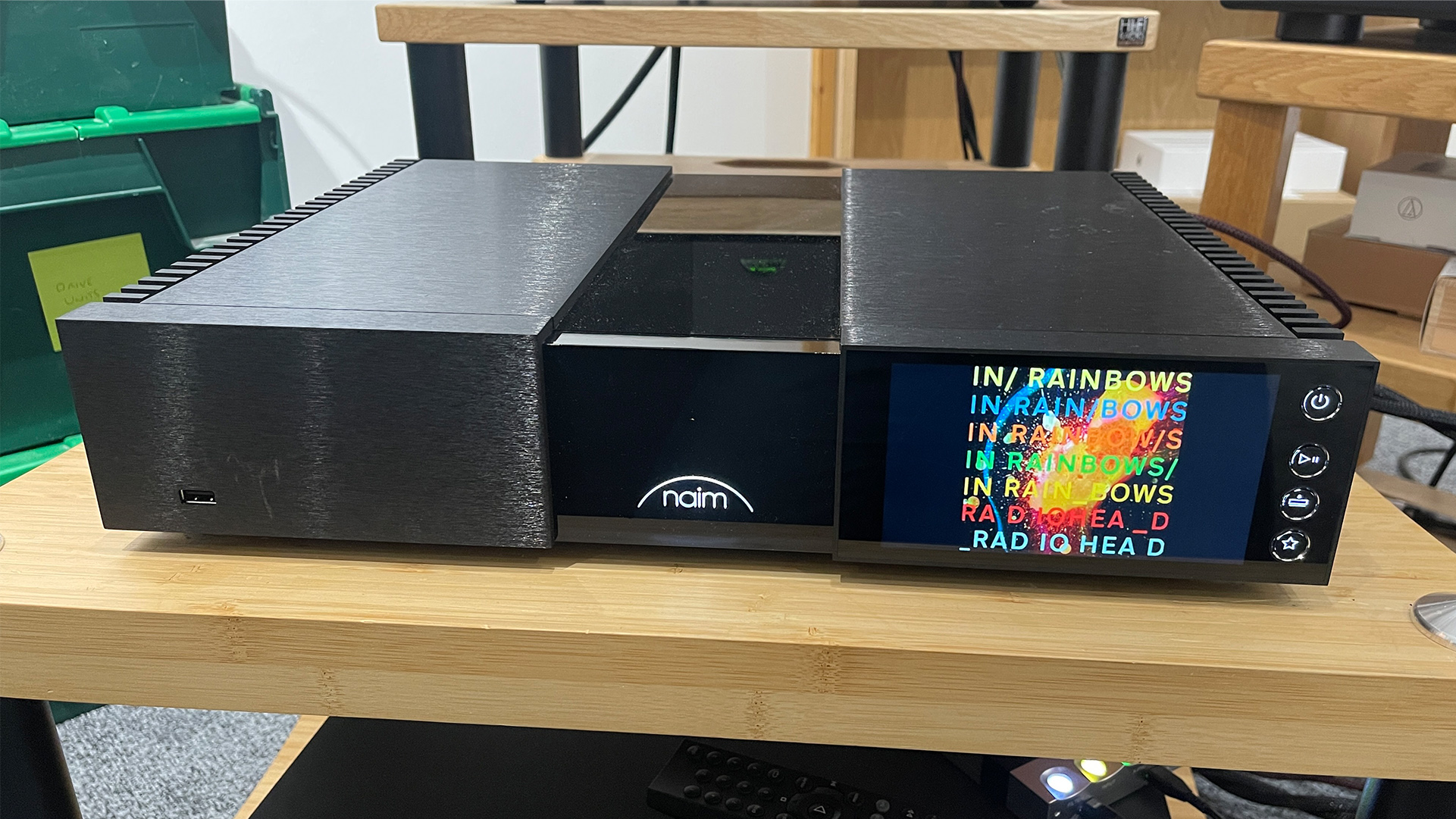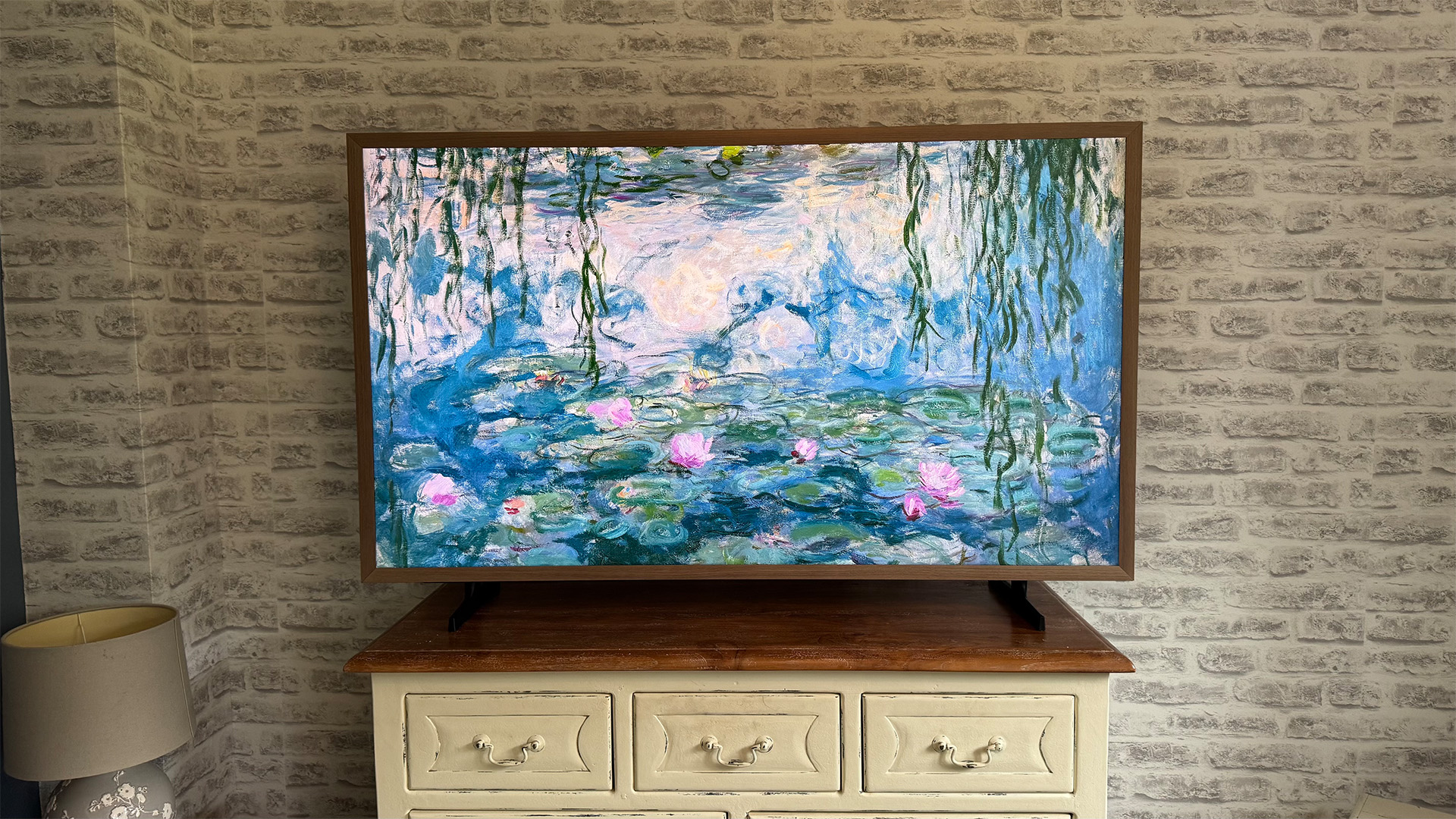What Hi-Fi? Verdict
The Naim NSS 333 is one of the most musically satisfying music streamers we have heard
Pros
- +
An engaging and emotionally charged performance
- +
Excellent build
- +
Upgrade potential
Cons
- -
No USB (Type B) input
- -
Optional outboard NPX 300 power supply is relatively expensive
Why you can trust What Hi-Fi?
Cards on the table, we’ve been using Naim’s music streamers in our reference systems for around a decade now. It’s not just because they sound good, which they do, but also because the company has continued to develop its streaming platform in a way most premium rivals haven’t. That they have proved reliable seals the deal.
This fully committed approach means that Naim’s streaming products tend to be up-to-date with features and operate with a slickness that makes most rivals seem half-baked in comparison. The new NSS 333 music streamer we have on test here reinforces that positive impression.
Build & features
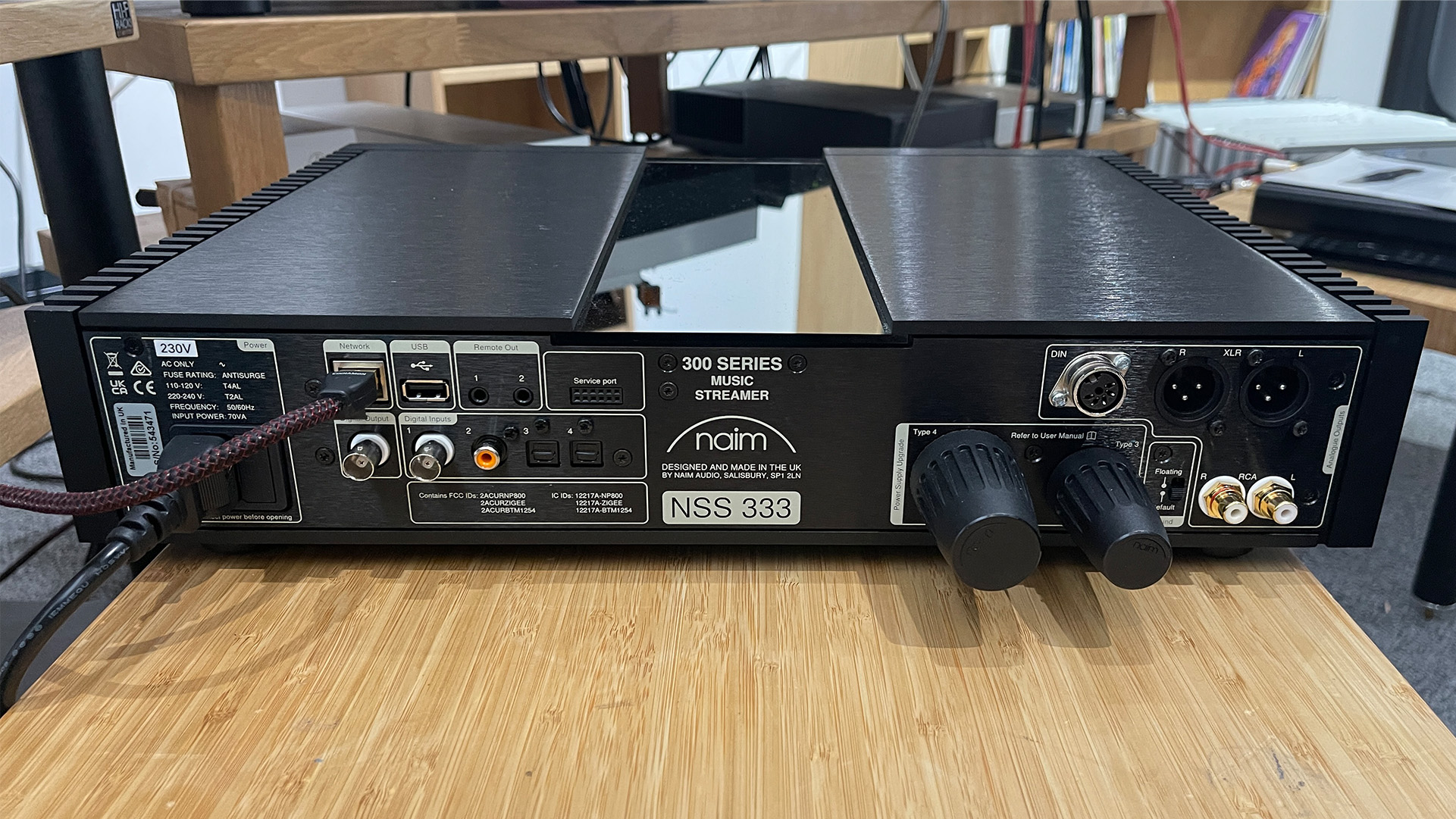
This streamer is part of the company’s new 300 series, which also includes the NAC 332 preamp (£8500 / $10,999 / AU$17,999), NPX 300 outboard power supply (£5900 / $8999 / AU$13,500 ) and NAP 350 mono power amplifier (£12,999 / $17,000 / AU$25,000). The NSS 333 sits above the almost as new NSC 222 streaming preamp (£6200 / $8999 / AU$13,500) in Naim’s hierarchy and justifies its price premium with even better sound quality. There is a downside though, and that’s the loss of the junior sibling's analogue preamp functionality.
The NSS 333 still packs plenty in its solid and well-finished all-new casework. The company’s well-proven NP800 streaming platform covers all important bases. It is a UPnP streamer and file compatibility is good, though not class-leading, with the unit able to play up to 32-bit/384kHz PCM files and DSD128. It has access to streaming services – Spotify Connect, Tidal Connect, Apple Music and Qobuz – plus the thousands of stations available through internet radio. As expected, network protocols such as Chromecast and Apple AirPlay 2 are included, as is the ability to read music files from attached USB storage. This Naim is also certified as Roon Ready.
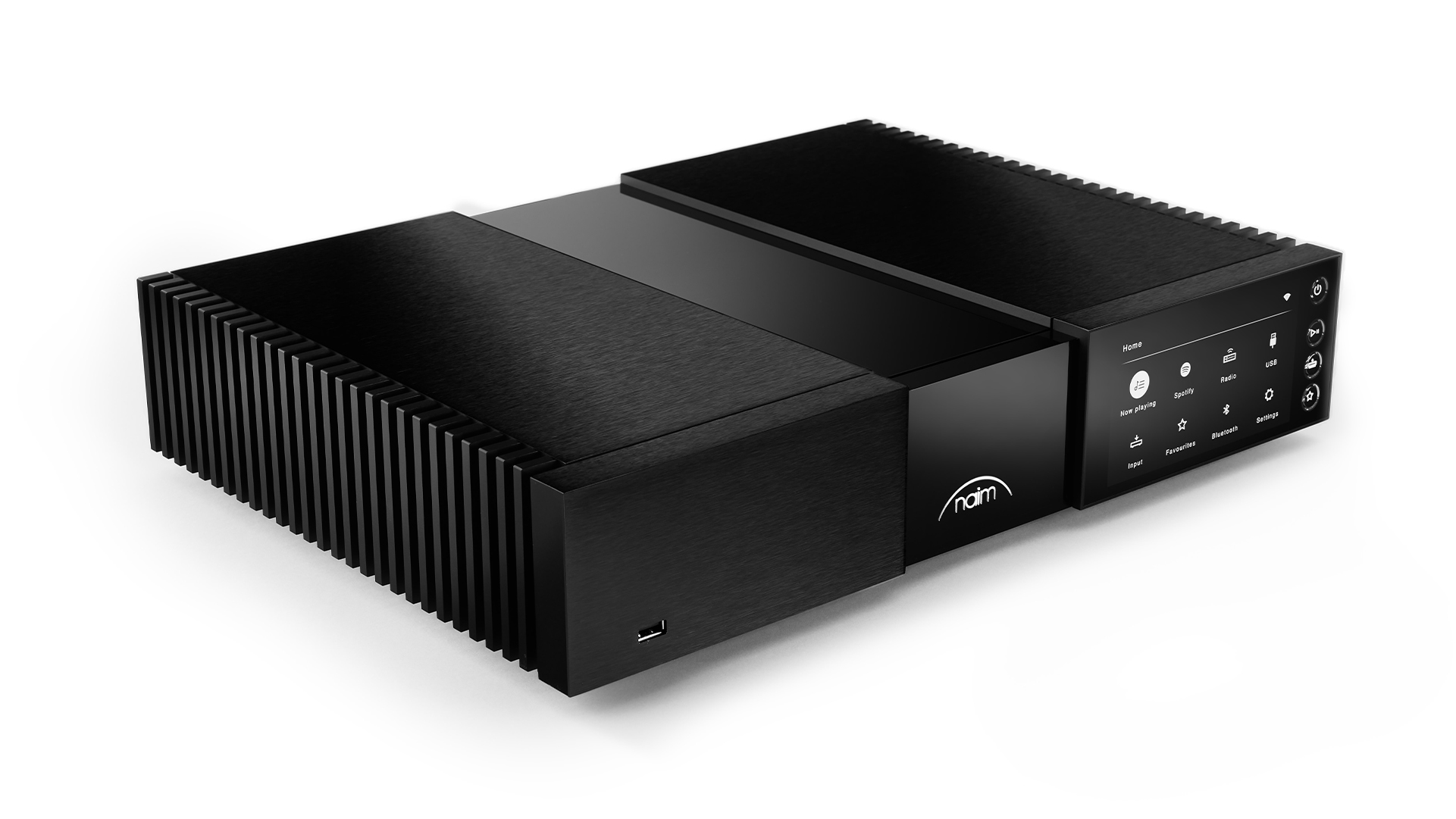
Sources Network streaming, Bluetooth
Network Wi-fi and ethernet
Inputs USB Type A x 2, optical x 2, coaxial x 2
Outputs Din & stereo RCA Line level, balanced XLR, digital BNC coaxial
Headphone output? No
Max file resolution 32-bit/384kHz, DSD128
Streaming features UPnP, AirPlay 2, internet radio, Spotify Connect, Tidal Connect, Chromecast built-in, aptX Adaptive Bluetooth
Dimensions (hwd) 9.2 x 43 x 32cm
Weight 11kg
Take a look inside and you will find that the company’s engineers haven’t followed fashion in their choice of DAC chips. The NSS 333 uses a relatively old design in the form of Burr Brown’s PCM1791A on the grounds of sound quality. The digital filters in the Burr Brown chips are bypassed for circuits of Naim’s own design to improve performance. As expected at this level, it is obvious that a great deal of thought has been given to the overall circuit layout and the power supply arrangement to get optimal results from the electronics.
Connectivity is decent with a pair of optical digital inputs augmented by a duo of coaxs (RCA and BNC). It is something of a surprise to find a USB (Type B) not included, but given that the NSS 333 can play pretty much every music file your computer can, this isn’t a deal breaker.
You can connect to your home network through wi-fi or ethernet cable, and to your preamp through stereo RCA, balanced XLR as well as Naim’s usual DIN output. We try all three analogue output options and prefer the sound using the DIN. In our system, this delivers slightly crisper and more articulate results than the alternatives. Note though that the differences are relatively small, so don’t worry if you need to use one of the other options, as this is not a ‘make or break’ decision. Interestingly, the signal level out of the balanced XLR sockets (2.1V) is the same as the single-ended connections rather than double, as it usually is. If you are comparing this Naim to one of its rivals using the balanced output this is something to keep in mind and needs to be compensated for with a volume level adjustment.
Staying on the back panel, you will notice that there are two Burndy connector sockets (one to feed the digital circuits and the other for analogue). As standard, these are occupied by dedicated shorting plugs supplied with the product. However, if the upgrade bug strikes, those shorting plugs are removed and the NPX 300 outboard power supply can be connected. This isn’t a cheap upgrade, but in our experience the addition of an NPX 300 will make a significant improvement to the sound in terms of scale, authority, dynamics and detail resolution. In a system that justifies such an expense, it is certainly a box we would tick.
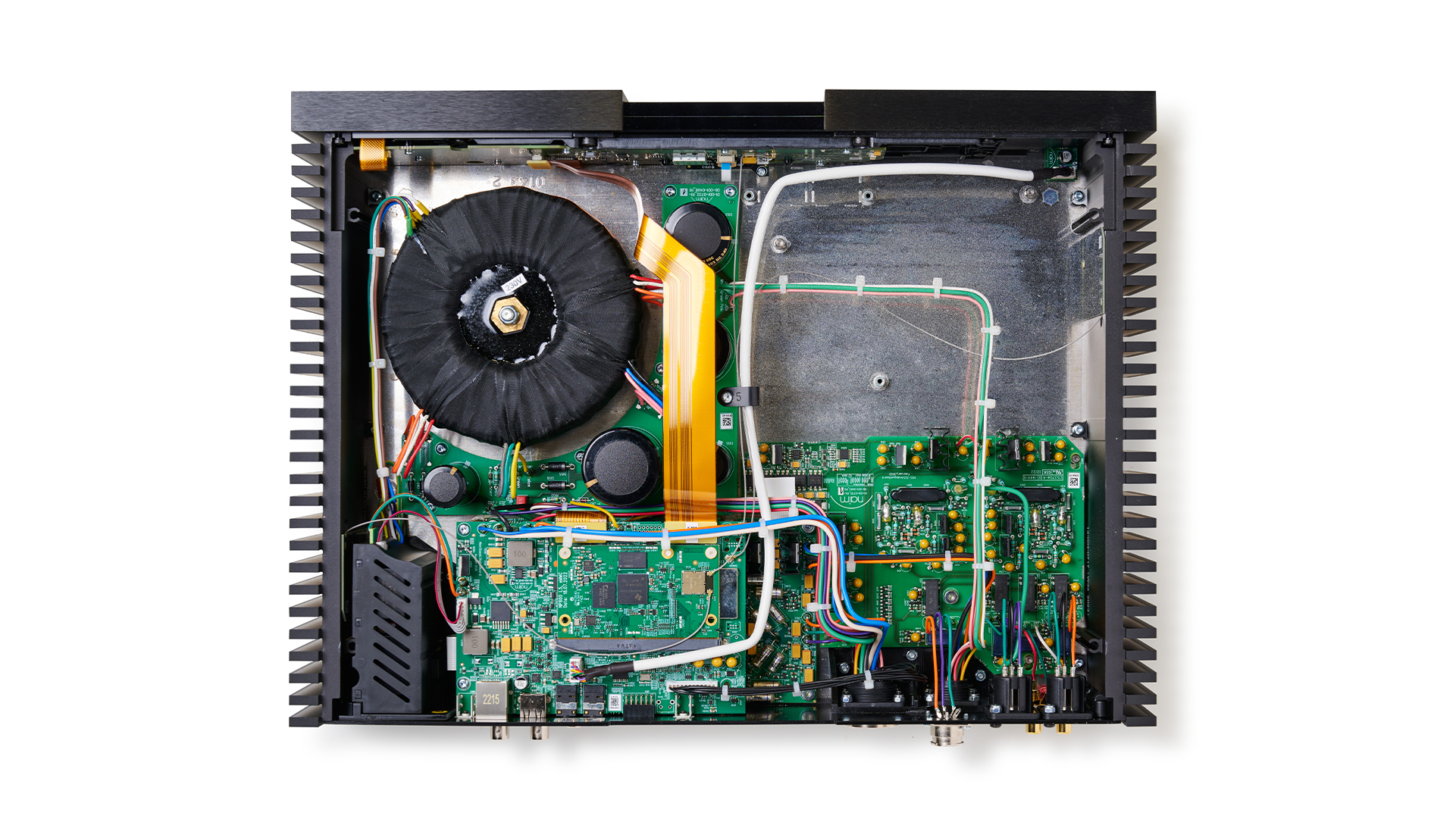
We’ve found Naim streamers among the best in terms of general usability. The streaming platform is stable and capable of dealing with all file types with ease. The company’s control app is good by industry standards and generally works in a slick and stutter-free way. If you don’t always want to use the app, this streamer also comes with a physical remote and can also be operated (in a basic way) with its front panel controls. The 5.5-inch front panel full-colour display is crisp and easy to read from a distance.
Any product at this level positively demands a top-class partnering system. We use our usual reference set-up of Burmester 088/911 MkIII amplifier and ATC SCM50 speakers. Our reference music streamer and the NSS 333’s bigger brother, the two-box Naim ND 555/555 PS DR, is on hand to set a benchmark. Recent experience with Moon’s similarly priced 681 is fresh in our memories and we’ve tested the likes of dCS’s pricier Lina Network DAC and the Linn Selekt DSM: Edition Hub in the recent past.
Sound
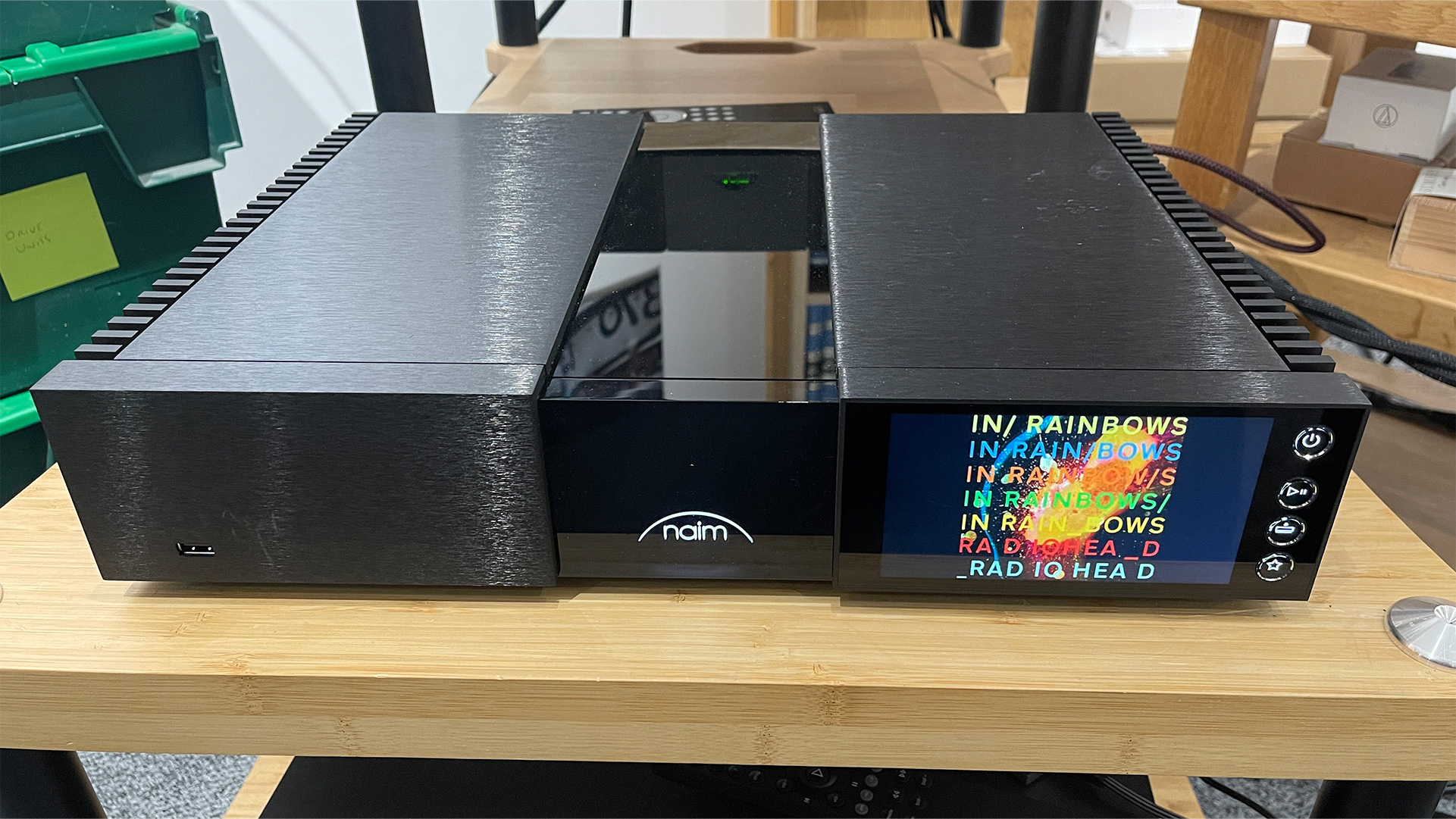
The NSS 333 sounds reassuringly familiar once given time to settle. As expected, it sits comfortably between the NSC 222 and ND 555/555 PS DR in terms of performance, retaining the balanced but entertaining presentation we’ve come to appreciate from the brand.
There is an intrinsic rightness to the sound of Naim’s recent streamers that stems from them getting the structural elements of music right. The NSS 333 is expert at delivering rhythmic drive, and so can communicate the changing momentum in a piece of music like Stravinsky’s The Rite Of Spring brilliantly. This skill is vital in delivering the music’s energy, but so is the articulate way this streamer renders dynamic shifts. This Naim goes from quiet to loud and back again effortlessly. It is also superb at communicating the smaller shifts in intensity that generate the ebb and flow of the tension in the music. In our view, these are the qualities, more than things like absolute detail resolution, tonal neutrality or stereo imaging, that hold the listener’s attention over time.
A sense of organisation is important too, and the Naim is great at pulling together all the instrumental strands in this frantic Stravinsky piece so making it sound like a cohesive whole. Every sound pulls in the same direction, helping the music hit its emotional mark. You can add muscularity to the NSS 333’s plus points with the streamer able to deliver the full force of the orchestra with ease and thump out the music’s crescendos with venom. There is little sense of strain even in the symphony’s more demanding sections.
This streamer’s tonality is even and full-bodied. It doesn’t sound that way from cold though, with a sense of hardness and constriction taking a little time to fade. But once past that point, the NSS 333 sounds well balanced if a little forward in how it presents music. Stereo imaging is good too. It isn’t the most spacious we’ve heard, Moon’s 681 produces more in terms of soundstage width, but the Naim still manages to deliver admirable precision and stability in the way it places instruments and sounds. More importantly, it can believably render concert hall acoustics, placing the orchestra within the environment convincingly.
The NSS 333 is equally at home when we switch musical genres to Outkast’s ATLiens set. Here the Naim delivers the lows with punch, power and agility. We’re impressed at the bass grip on offer and the streamer’s authoritative nature. Moving up the frequency range we find the midrange equally appealing. The group’s distinctive rapping style comes through with clarity, and there is little to criticise when it comes to hearing exactly what is being said in their sometimes frantic vocal delivery. Voices are rendered with expression and fluidity, leaving the listener in no doubt as to the intended message.
We note the streamer’s excellent sense of organisation and control again, and also the way it manages to communicate the excitement of the music. The more laidback tracks, such as Elevators (Me & You) prove that the NSS 333 is capable of slowing down where necessary, giving the track a suitably chilled-out feel. There is plenty of refinement here, though if you present this Naim with an aggressive recording it won’t work particularly hard to make the results more palatable. This is a revealing and insightful performer, and it will put a spotlight on any shortcomings in the source material. Importantly, it won’t go out of its way to make things sound worse than they are.
Bluetooth works well, with the NSS 333 connecting to our iPhone 12 Pro Max swiftly and without issue. This input sounds decent enough but should never be the connection of choice when sound quality matters most. Still, it remains a convenient and useful way to integrate phones or tablets into your hi-fi. Some rivals don’t include Bluetooth, so we’re glad that Naim has gone to the trouble of doing so.
Next, we try the physical digital inputs and are pleased to report that the results are impressive. They mirror the positives we hear when using the NSS 333 as a streamer. Across Stevie Wonder’s Innervisions (DSD64), Hans Zimmer’s The Dark Knight Rises OST (24-bit/192kHz PCM) and A Retrospective by the folk group The Unthanks (24-bit/44.1kHz) the Naim produces results that thrill and enthral, and occasionally make us feel sad (because that's what the music intended). Despite using what would now be considered dated DAC chips, the NSS 333’s DAC section is good enough to give many higher-end stand-alone units a bloody nose.
Verdict
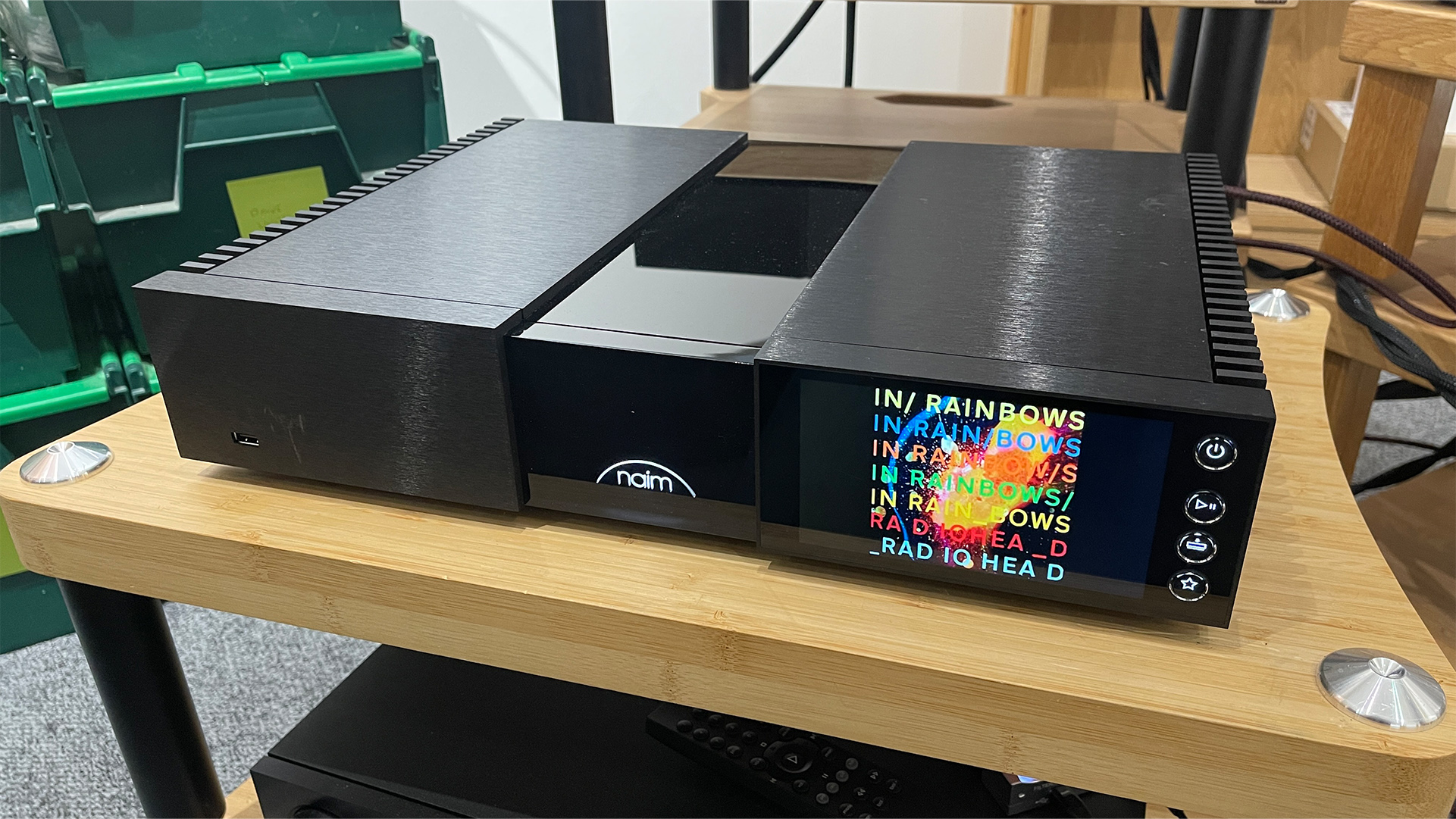
It should be clear by now that we rate the Naim NSS 333 very highly. It delivers a significant chunk of the ND555/555 PS DR’s performance at a fraction of the price. Sure, it still costs big money, but in the world of high-end hi-fi, we feel it still represents terrific value. Highly recommended.
SCORES
- Sound 5
- Build 5
- Features 5
MORE:
Read our review of the Linn Selekt DSM: Classic Hub
Also consider Naim's NSC 222
Read our dCS Lina Network DAC review
Best music streamers: top network audio streamers tested by our experts
What Hi-Fi?, founded in 1976, is the world's leading independent guide to buying and owning hi-fi and home entertainment products. Our comprehensive tests help you buy the very best for your money, with our advice sections giving you step-by-step information on how to get even more from your music and movies. Everything is tested by our dedicated team of in-house reviewers in our custom-built test rooms in London, Reading and Bath. Our coveted five-star rating and Awards are recognised all over the world as the ultimate seal of approval, so you can buy with absolute confidence.
-
Hifiman I am surprised more was not made of the lack of USB (B) input at this level. When the less expensive 222 was reviewed by WHF last year this omission was regarded as ‘a bit of an oversight to us’ whereas here it ‘isn’t a deal breaker’.Reply
I suspect a fair few might disagree. -
Friesiansam ReplyWhat Hi-Fi? said:It is something of a surprise to find a USB (Type B) not included, but given that the NSS 333 can play pretty much every music file your computer can, this isn’t a deal breaker.
It has a USB (type A) input, there is not a problem.Hifiman said:I am surprised more was not made of the lack of USB (B) input at this level.
https://www.naimaudio.com/product/nss-333 -
Kenneth Fernandes Reply
And what about USB-C then?Hifiman said:I am surprised more was not made of the lack of USB (B) input at this level. When the less expensive 222 was reviewed by WHF last year this omission was regarded as ‘a bit of an oversight to us’ whereas here it ‘isn’t a deal breaker’.
I suspect a fair few might disagree. -
Friesiansam Reply
Doesn't matter whether it is A, B or C. What does matter is that the WHF reviewer criticised a lack of USB input, even though one is present.Kenneth Fernandes said:And what about USB-C then? -
Kenneth Fernandes Reply
Although there are other Naim products like the Uniti range of all-in-one Wireless Streaming Amplifiers, there is very little scope for purchasing separates these days. Simply because it has never been easier to recycle old electronic devices and replace them with modern and energy-efficient devices. Also, it is very much possible to have a Processor+DAC+Amplifier on a single PCB board without any wires(wire-less), except for power input, and still achieve optimal cooling. In that way, you could easily connect any other device like a laptop via USB-C and use it as an external DAC (if the device has the feature), to stream content from a dedicated music software and also charge your laptop/device.Friesiansam said:Doesn't matter whether it is A, B or C. What does matter is that the WHF reviewer criticised a lack of USB input, even though one is present. -
Friesiansam Reply
All USB types can be powered.Kenneth Fernandes said:Although there are other Naim products like the Uniti range of all-in-one Wireless Streaming Amplifiers, there is very little scope for purchasing separates these days. Simply because it has never been easier to recycle old electronic devices and replace them with modern and energy-efficient devices. Also, it is very much possible to have a Processor+DAC+Amplifier on a single PCB board without any wires(wire-less), except for power input, and still achieve optimal cooling. In that way, you could easily connect any other device like a laptop via USB-C and use it as an external DAC (if the device has the feature), to stream content from a dedicated music software and also charge your laptop/device. -
Jasonovich It has it's hallmark NAIM signature, in term of aesthetics, it's quirky, love or hate it. I'm not sure I want to pay £8.5K for a streamer, when I can have a Rose for much less. Still, if you're sold into the NAIM eco-system this might appeal to you.Reply -
Woof ! Reply
I borrowed one for a week. It has USB-A connector for file storage only, not for input. There are also NO drivers available for using USB for input from a computer. The onboard streamer software is clunky - like they all are - so using a PC via USB-B or C is definitely preferable, especially if you have a large collection of stored music. For the record; I gave it back and bought a Mola Mola Tambaqui instead which is superb!Friesiansam said:It has a USB (type A) input, there is not a problem.
https://www.naimaudio.com/product/nss-333 -
Jasonovich Reply
Welcome to the forum Woof, from your well crafted comment I can see you're not 'Barking Mad' ! :ROFLMAO: Sorry :)Woof ! said:I borrowed one for a week. It has USB-A connector for file storage only, not for input. There are also NO drivers available for using USB for input from a computer. The onboard streamer software is clunky - like they all are - so using a PC via USB-B or C is definitely preferable, especially if you have a large collection of stored music. For the record; I gave it back and bought a Mola Mola Tambaqui instead which is superb!
I've never heard of the Mola Mola Tambaqui, I'll need to check it out.
NAIM has a very fine reputation and make excellent HiFi but I do wish the connectivity for their devices adhere to open standards, LINN is the same. It means you have to pay a premium for their bespoke cabling. I don't know, maybe they just want to wean people into their eco system. I have a theory, people feel specially treated when they have exclusivity i.e. doing different things from the norm, like NAIM, weird shaped boxes, odd aesthetics, alien sockets etc., I'm sure someone with a better understanding of psychology will no doubt debunk this.
7135 -
Woof ! Reply
Thank you for your faint praise and the welcome :0)Jasonovich said:Welcome to the forum Woof, from your well crafted comment I can see you're not 'Barking Mad' ! :ROFLMAO: Sorry :)
I've never heard of the Mola Mola Tambaqui, I'll need to check it out.
NAIM has a very fine reputation and make excellent HiFi but I do wish the connectivity for their devices adhere to open standards, LINN is the same. It means you have to pay a premium for their bespoke cabling. I don't know, maybe they just want to wean people into their eco system. I have a theory, people feel specially treated when they have exclusivity i.e. doing different things from the norm, like NAIM, weird shaped boxes, odd aesthetics, alien sockets etc., I'm sure someone with a better understanding of psychology will no doubt debunk this.
7135
I have to say that all the Naim kit I have heard does indeed sound better using their weird DIN connectors. Whether that's by design or because they just are better is open for debate I reckon. There are at least some 3rd party manufacturers making Naim/DIN cables but they are properly expensive - maybe they have to pay a large %age to Naim for a license??
Mola Mola are based in Denmark. We were replacing a Naim DAC-V1 which originally cost about £1250 I think. We basically had to spend £10K to find something that was a step-change better which says a lot about the quality of the Naim DAC and/or about the cost of modern high-end hi-fi. A real shame Naim discontinued the V1 instead of creating a V2!
